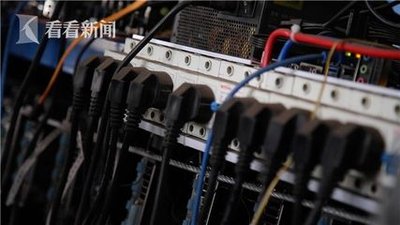The cryptocurrency landscape in Argentina has witnessed significant evolution over the past few years. With Bitcoin’s explosive growth, many Argentinians have flocked to mining as a viable source of income. However, the question looms large: how do individuals effectively navigate the costs associated with hosting mining machines in this unique economic environment? The intricate interplay between mining rig expenses, operational overheads, and fluctuating cryptocurrency prices requires careful consideration.

To truly grasp the implications of hosting mining machines, one must first understand the significance of Bitcoin and its contemporaries — Dogecoin, Ethereum, and others. Bitcoin, often heralded as the flagship cryptocurrency, remains the cornerstone of the mining world. Its complexity necessitates powerful, energy-intensive mining rigs. Meanwhile, altcoins like Ethereum and Dogecoin present alternative opportunities for miners, yet they require a nuanced understanding of hardware and network demands.
Investment in mining machines can be likened to entering a high-stakes game; the initial input can be substantial, with GPUs and ASIC miners typical in operational setups. On the surface, mining rigs seem like a direct route to profit. However, the ever-volatile nature of cryptocurrency values complicates this perception. As global markets fluctuate, miners must remain vigilant to the cost-benefit ratio of mining versus the price achieved in exchanges.

The aspect of mining machine hosting emerges as a beacon of stability in the face of unpredictability. For those who may not wish to establish their own mining setup at home — fraught with noise, heat, and electricity costs — hosting services offer a compelling alternative. By utilizing existing infrastructure, miners can benefit from economies of scale while offloading the operational burdens of maintenance, electricity, and cooling.
However, as the landscape is not without its challenges, navigating hosting costs requires due diligence. For example, rented space in a hosting facility can be steep, yet the potential for reduced downtime and cheaper electricity rates can offset these expenditures. Miners must calculate the total cost of ownership, weighing monthly fees against their expected yields, factoring in variables such as Bitcoin price and mining difficulty indices.
Additionally, the emergence of cloud mining services in Argentina has disrupted traditional hosting dynamics. By purchasing hash power instead of hardware, users circumvent numerous logistical hurdles. Yet, this model too is marred by complications such as service reliability, transparency issues, and the potential for inflated promises—often promising returns that seem too good to be true.
As Argentina slowly embraces the potential of cryptocurrencies, local regulations and incentives are gradually shaping the mining landscape. Policymakers are recognizing the promise of crypto as a transformative economic tool, yet the legal framework remains nebulous. Miners must stay informed of changes that could impact operational costs ranging from taxation to import tariffs on hardware.
With many Argentinians having faced economic hurdles, cryptocurrency mining presents a prospect for empowerment through technology. Passionate individuals can transform their homes into profitable mining hubs or join communal mining farms designed for collaboration and efficiency. In any case, the journey demands resilience against market forces, ongoing education about hardware advancements, and strategic organizational skills.
Ultimately, despite the volatility of Bitcoin, Ethereum, and Dogecoin prices, the innovation inherent in mining continues to evolve with the technology and community’s resilience. From strategic hosting solutions to the development of mining farms, the road forward is paved with opportunities that, when approached intelligently, can yield memorable results amidst the unpredictability.




Leave a Reply